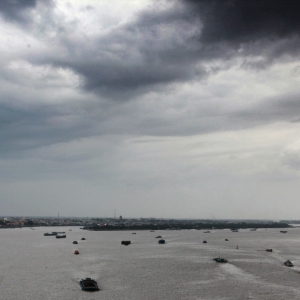The Stream, November 1, 2019: Keystone Pipeline Spills 383,000 Gallons of Crude Oil in North Dakota, Affecting Wetlands
The Global Rundown
The Keystone pipeline spills 383,000 gallons of crude oil in North Dakota. Severe flooding forces 200,000 people in Central Somalia from their homes. Rural Kentucky counties improve the quality of their water, but many residents are now unable to pay their water bills. Parts of Southeast Asia’s Mekong River continue to plummet. Hydroelectric lakes in Southeast Alaska slowly recover from drought.
“It is one of the larger spills in the state.” –Karl Rockeman, director of the North Dakota Department of Environmental Quality’s division of water quality, in reference to a 383,000-gallon crude oil spill that occurred in North Dakota on Tuesday evening. The spill, which has now been contained, reportedly affected a half-acre of wetlands. The Hill
In context: Water and Climate Safety, Finance Security, Drive Keystone XL Conflict.
Latest WaterNews from Circle of Blue
Vast Differences in Legionnaires’ Disease Response by Industry — Outside of healthcare, there are few rules for preventing the spread of the deadly bacteria in buildings.
Election 2019: State and Local Voters Face Water Infrastructure Funding Decisions — Ballot initiatives in Colorado, Texas, New Orleans, and Portland address flooding, financing, and watershed protection.
By The Numbers
41 percent Amount that water rates increased in Martin County, Kentucky, over the past year as local officials worked to improve drinking water safety in the area. Parts of rural Kentucky have grappled with dirty water for years, but now that the problem is being addressed, many customers are unable to afford the resulting increase in water bills. NPR
In context:
Kentucky AG Investigates Rural Water System That Has Been Failing for Decades.
When It Comes To Water Service How Expensive Is Too Expensive?
200,000 Residents of Beledweyne, Somalia, who have been forced to leave their homes due to intense rainfall in the Hiraan and Bakool regions of Central Somalia. The storms have caused floods and infrastructure damage, leading to concerns about outbreaks of malaria, cholera, and other diseases. Relief Web
Science, Studies, and Reports
Stretches of the Mekong River continue to plummet to record-low levels. In parts of northern Thailand, the river has shrunk from roughly 1,000 meters wide down to just a few dozen meters. The plunging water levels are due to a combination of drought and the newly-opened Xayaburi hydro-electric power plant in upstream Laos. Phys.org
In context: One By One Big Hydropower Dams Disrupt Mekong River’s Free Flow.
On the Radar
Several hydroelectric lakes in Southeast Alaska, which provide a portion of the electricity for the cities of Ketchikan, Wrangell and Petersburg, are gradually refilling following drought. Last year, the reservoirs dropped so low that the three communities were forced to use diesel power temporarily. Now, officials say the lakes are replenishing well. Alaska Public Media
Kayla Ritter is a recent graduate of Michigan State University, where she studied International Relations and Teaching English to Speakers of Other Languages. She is currently based in Manton, Michigan. Kayla enjoys running, writing, and traveling. Contact Kayla Ritter







Leave a Reply
Want to join the discussion?Feel free to contribute!